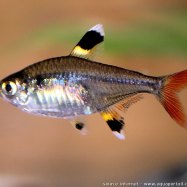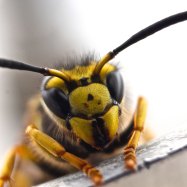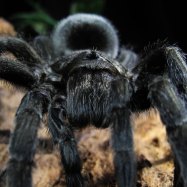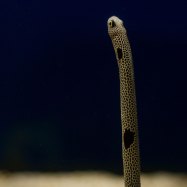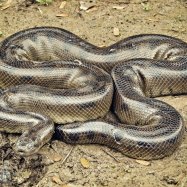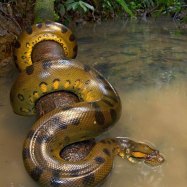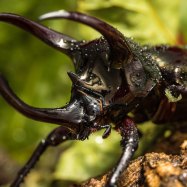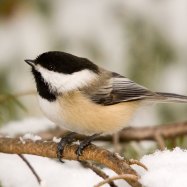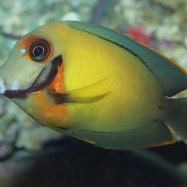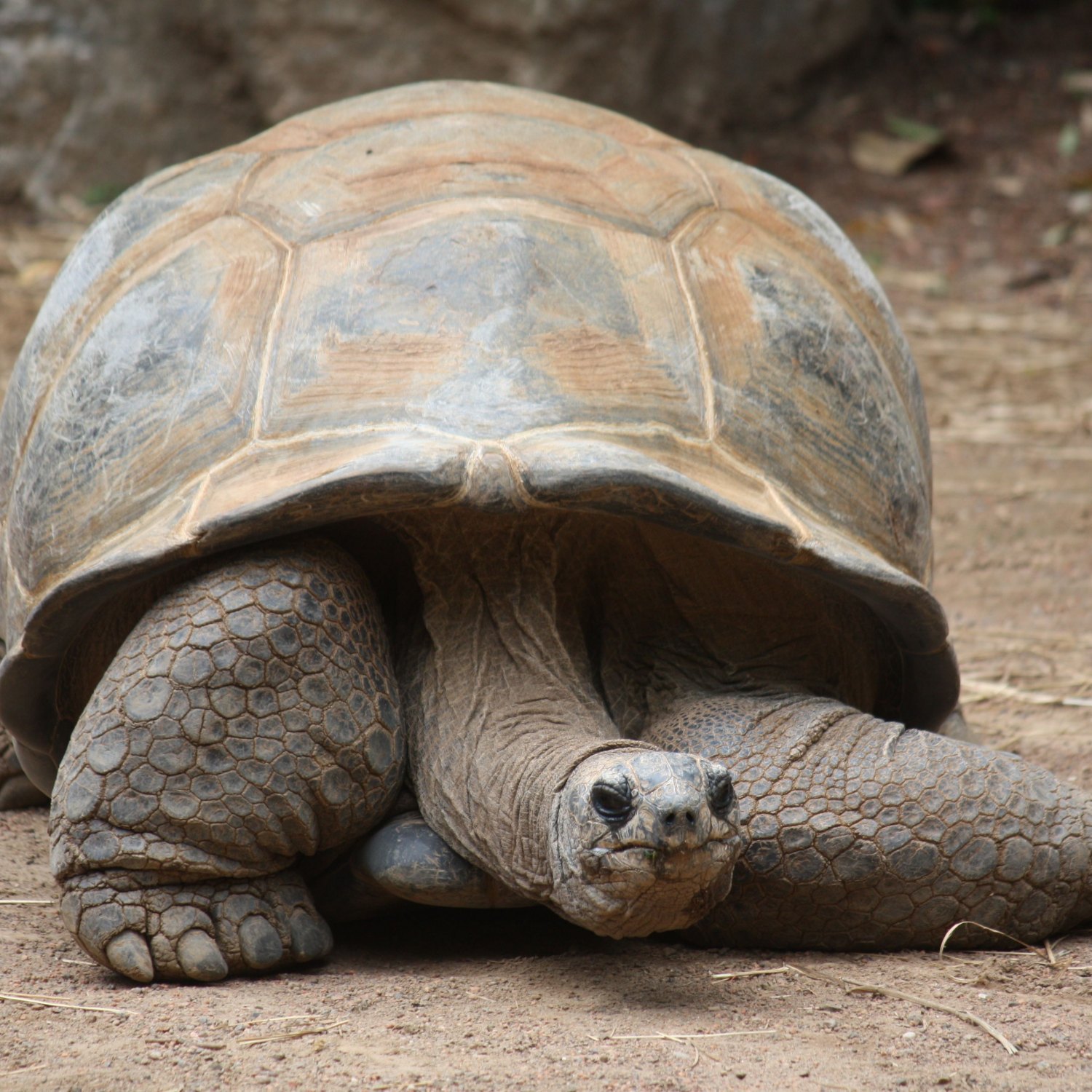
Aldabra Giant Tortoise
Up to 120 cm (47 in)
Did you know the Aldabra Giant Tortoise is one of the largest tortoise species in the world? Found in the Aldabra Atoll, this gentle giant can grow up to 120 cm and weigh over 500 pounds! With its large and dome-shaped body, this amazing creature is truly a sight to behold. Don't miss the chance to see this iconic animal in its natural habitat. #AldabraGiantTortoise #Testudinidae #GiantTortoise #AldabraAtoll #naturalhabitat
Animal Details Summary:
Common Name: Aldabra Giant Tortoise
Kingdom: Animalia
Habitat: Terrestrial
The Majestic Aldabra Giant Tortoise: A Symbol of Resilience and Conservation
The world's oldest living creatures, the Aldabra giant tortoises, have been roaming the earth for millions of years. These ancient and magnificent creatures are known for their longevity, their slow and steady pace, and their colossal size. Native to the Aldabra Atoll in Seychelles, the Aldabra giant tortoise has become an emblem of these remote islands, symbolizing both their natural beauty and their resilience.Scientifically known as Aldabrachelys gigantea, the Aldabra giant tortoise is a reptile belonging to the class Reptilia, and the family Testudinidae Aldabra Giant Tortoise. These gentle giants can weigh up to 500 pounds and measure up to four feet in length, making them one of the largest species of tortoises in the world.
Ancient Origins and Evolution
The Aldabra giant tortoise is a testament to the remarkable impact of evolution. These tortoises are believed to have developed from a common ancestor to the other giant tortoise species found in the Galapagos Islands, Madagascar, and the Mascarene Islands. They have been on the planet for over 100,000 years, living through the ice age and countless other changes to their surroundings. Their ability to adapt and survive is a true marvel of nature.In addition to their impressive lifespan, the Aldabra giant tortoise's remarkable size is another facet of their evolution. These tortoises are thought to have grown so large due to the absence of natural predators on the remote Aldabra Atoll. They thrive on the island's lush vegetation and have no fear of being hunted or disturbed, allowing them to grow to massive proportions.
Physical Features and Behavior
The Aldabra giant tortoise has a distinct appearance with a large and dome-shaped body, thick and sturdy legs, and a large head American Eskimo Dog. Their shells, also known as carapaces, are a gray or brown color, and their necks and limbs are a lighter shade. These magnificent creatures have a unique shell pattern, with each tortoise having a different arrangement of rings and grooves on their carapace.One of the most admirable traits of these gentle giants is their slow and steady pace. They are known to move very slowly, using their powerful legs to carry their weight. Due to their impressive size and weight, their movements are deliberate and purposeful, resembling that of a prehistoric creature. Their peaceful and calm demeanor is yet another remarkable aspect of their behavior, making them a joy to observe in the wild.
Habitat and Geographic Distribution
The Aldabra giant tortoise is a terrestrial animal, meaning it lives on land rather than in the water. They are found on the Aldabra Atoll, a group of four islands situated in the Indian Ocean, 715 miles east of the African country of Tanzania. This isolated and uninhabited location is the only place on earth where these tortoises are found in the wild. The Aldabra Atoll, with its warm and humid climate, is the perfect habitat for the Aldabra giant tortoise, providing them with an abundance of food and shelter.Feeding Method and Diet
As herbivores, the Aldabra giant tortoises primarily feed on vegetation, including grass, leaves, and fruits. Due to their slow metabolism, they can survive for long periods without food or water, making them well-suited to the arid climate of the Aldabra Atoll. These tortoises have a unique way of consuming their food. They use their sturdy beak-like mouth to tear off and break down the leaves and plants, pulling them into their mouth with their powerful tongue.Conservation Efforts and Threats
Aldabra giant tortoises were once on the brink of extinction, with only a few hundred individuals remaining on their original habitat of the Aldabra Atoll. However, through conservation efforts and strict protective measures, their population has now grown to over 100,000. The government of Seychelles has played a vital role in saving these magnificent creatures by establishing Aldabra Atoll as a nature reserve, restricting human activities and promoting sustainable tourism.The Symbol of Resilience and Conservation
The Aldabra giant tortoise holds a special place in the hearts of the Seychellois people, serving as a symbol of the country's dedication to preserving its natural heritage. These ancient creatures embody resilience and adaptability, having survived through countless challenges and changes to their environment. Today, they stand as a testament to the importance of conservation efforts and the power of human actions in protecting the earth's biodiversity.The Future of the Aldabra Giant Tortoise
Thanks to the efforts of conservationists and the government of Seychelles, the future looks bright for the Aldabra giant tortoise. With their population continuously growing, these iconic creatures will remain a vital part of the Aldabra Atoll for generations to come. Their significance goes far beyond their impressive size and long lifespan; they serve as a reminder of the importance of preserving and protecting our planet's incredible wildlife.In conclusion, the Aldabra giant tortoise has captured the hearts and imaginations of people worldwide, and for a good reason. They are a symbol of resilience, adaptation, and conservation, and a true marvel of evolution. As we continue to explore the wonders of our planet, let us remember to protect and preserve the magnificent creatures that call it home.

Aldabra Giant Tortoise
Animal Details Aldabra Giant Tortoise - Scientific Name: Aldabrachelys gigantea
- Category: Animals A
- Scientific Name: Aldabrachelys gigantea
- Common Name: Aldabra Giant Tortoise
- Kingdom: Animalia
- Phylum: Chordata
- Class: Reptilia
- Order: Testudines
- Family: Testudinidae
- Habitat: Terrestrial
- Feeding Method: Herbivorous
- Geographical Distribution: Aldabra Atoll in Seychelles
- Country of Origin: Seychelles
- Location: Aldabra Atoll
- Animal Coloration: Gray or brown
- Body Shape: Large and dome-shaped
- Length: Up to 120 cm (47 in)
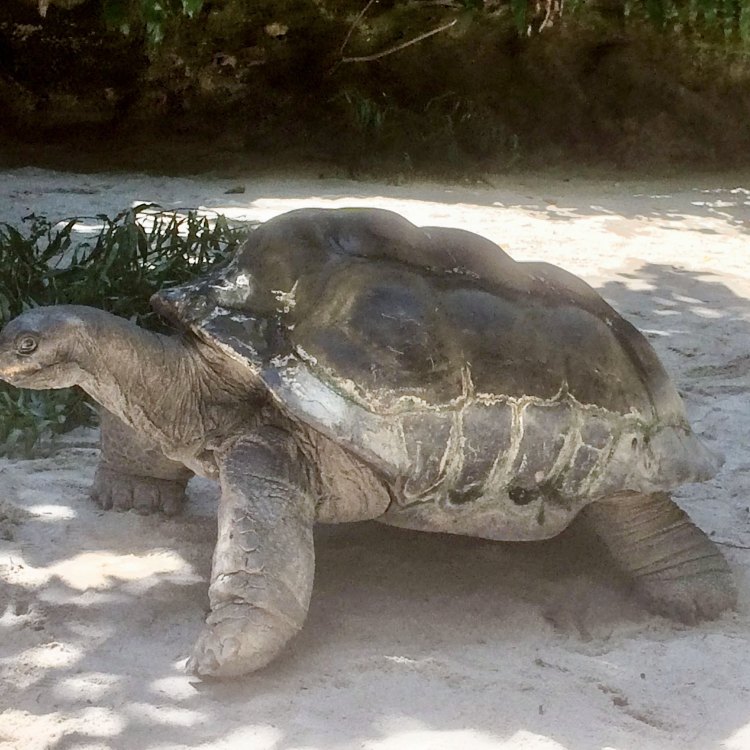
Aldabra Giant Tortoise
- Adult Size: Adults can weigh up to 250 kg (550 lb)
- Average Lifespan: Over 100 years
- Reproduction: Sexual
- Reproductive Behavior: Mating occurs on land
- Sound or Call: Males emit low roaring sounds
- Migration Pattern: Non-migratory
- Social Groups: Solitary or small groups
- Behavior: Slow-moving and docile
- Threats: Habitat destruction and poaching
- Conservation Status: Vulnerable
- Impact on Ecosystem: Important seed dispersers
- Human Use: Tourist attraction and research
- Distinctive Features: Gigantic size and long lifespan
- Interesting Facts: Aldabra Giant Tortoises are one of the longest-lived animals on Earth
- Predator: No natural predators
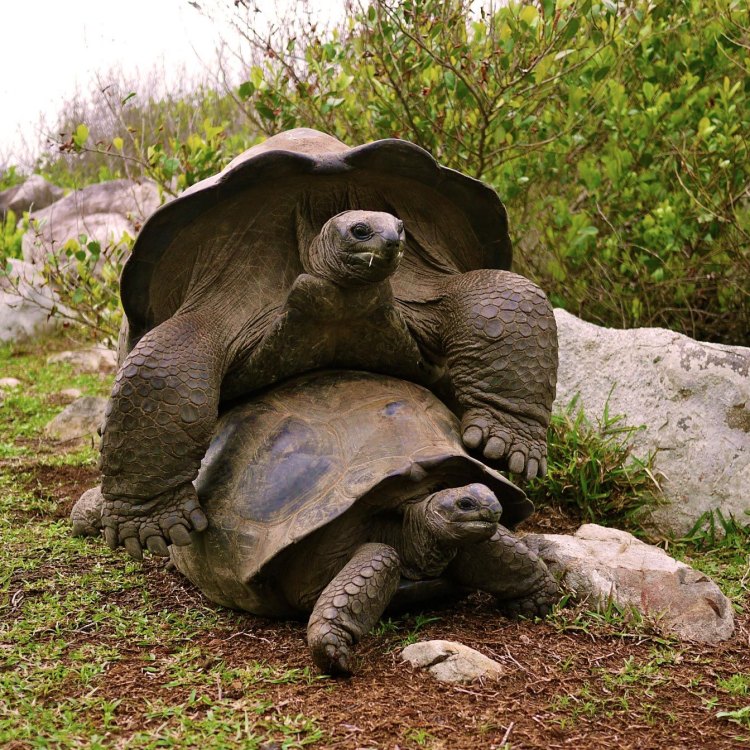
Aldabrachelys gigantea
The Amazing Aldabra Giant Tortoise: A Fascinating Creature With Gigantic Size and a Long Lifespan
The Aldabra Giant Tortoise, also known as the Aldabra tortoise or the giant tortoise of the Aldabra Atoll, is a species of tortoise native to the Aldabra Atoll in the Seychelles. These magnificent creatures are the largest tortoise species in the world and can weigh up to 250 kg (550 lb) when fully grown. But their huge size is not the only fascinating aspect of these gentle giants. In this article, we will delve into the unique features of the Aldabra Giant Tortoise and how they continue to amaze and captivate us PeaceOfAnimals.Com.Adult Size:
The first thing that comes to mind when we think of the Aldabra Giant Tortoise is their massive size. They are known to be one of the largest terrestrial animals and can weigh up to 250 kg (550 lb) when they reach adulthood. Their massive size is due to the abundance of vegetation on the Aldabra Atoll, their natural habitat, that provides them with an abundance of food.
Average Lifespan:
What sets the Aldabra Giant Tortoise apart from other animals is its incredibly long lifespan. These creatures have an average lifespan of over 100 years, making them one of the longest-lived animals on Earth. The oldest known Aldabra Giant Tortoise, named Jonathan, is estimated to be around 187 years old and still resides on the island of St Helena.
Reproduction:
Like most tortoise species, the Aldabra Giant Tortoise reproduces sexually. Female tortoises lay their eggs in the sand, and the eggs hatch after approximately 8 months. Interestingly, the temperature of the sand determines the gender of the hatchlings, with warmer temperatures producing females and cooler temperatures producing males Agama Lizard.
Reproductive Behavior:
The Aldabra Giant Tortoise is not as slow as you might think when it comes to mating. In fact, mating occurs on land, and male tortoises seek out females by producing low roaring sounds. They then engage in a ritualistic courtship that involves biting and head-knocking before mating.
Sound or Call:
The males of this species are known to emit low roaring sounds, especially during the breeding season. These sounds can be heard from a distance and help in the mating process.
Migration Pattern:
Unlike some other species of tortoises, the Aldabra Giant Tortoise is non-migratory. They tend to stay in a specific area or territory and do not migrate like many other animals.
Social Groups:
The Aldabra Giant Tortoise is generally a solitary animal, but they can also be found in small groups. They are not social creatures and prefer to spend most of their time alone, but they do interact with each other when necessary.
Behavior:
The Aldabra Giant Tortoise is known for its slow-moving and docile behavior. They are not particularly active animals and spend most of their time resting and grazing on vegetation. However, when threatened, they can move surprisingly fast and have been known to gallop when they need to escape danger.
Threats:
Unfortunately, these gentle giants are facing numerous threats in their natural habitat. The major threat is habitat destruction due to human activities and climate change. As a result, the International Union for Conservation of Nature (IUCN) has listed them as vulnerable on the Red List, and their population continues to decline.
Conservation Status:
The Aldabra Giant Tortoise's vulnerable conservation status highlights the urgent need for conservation efforts to protect this species. Thankfully, there are ongoing conservation efforts to protect their natural habitat and ensure their survival. These efforts include monitoring their numbers, protecting their breeding grounds and restricting human activities in their habitat.
Impact on Ecosystem:
The Aldabra Giant Tortoise plays a crucial role in the ecosystem as important seed dispersers. Due to their diet of fruits and vegetation, they consume seeds and help to disperse them around the island, contributing to the island's biodiversity.
Human Use:
Apart from being a vital part of the ecosystem, the Aldabra Giant Tortoise has also been a source of fascination for humans. Due to their impressive size and long lifespan, they have become a popular tourist attraction in the Seychelles and other regions where they are found. They have also been used for research purposes to better understand their behavior and biology.
Distinctive Features:
The most distinctive feature of the Aldabra Giant Tortoise is, of course, its gigantic size. But that's not all – these creatures also have a unique shell pattern that varies from tortoise to tortoise, making them easy to identify. Their long necks and elephantine feet also add to their distinctive appearance.
Interesting Facts:
Apart from being the largest tortoise species in the world and one of the longest-living animals, the Aldabra Giant Tortoise has many other interesting facts. For instance, they have no natural predators in their natural habitat. On the island of Aldabra, they have coexisted with other animals for thousands of years with no predators.
Conclusion:
The Aldabra Giant Tortoise is truly a remarkable creature with its gigantic size, large lifespan, and gentle demeanor. However, they face numerous threats in their natural habitat, making it crucial for us to protect and conserve these magnificent creatures. With continued efforts in conservation, we can ensure that these gentle giants continue to amaze and inspire us for generations to come.
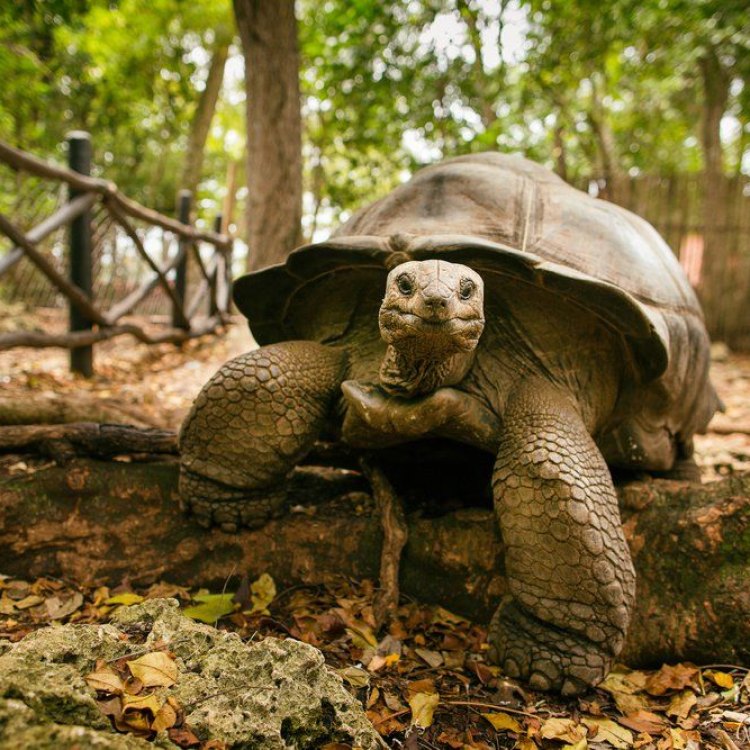
The Majestic Aldabra Giant Tortoise: A Symbol of Resilience and Conservation
Disclaimer: The content provided is for informational purposes only. We cannot guarantee the accuracy of the information on this page 100%. All information provided here may change without prior notice.

